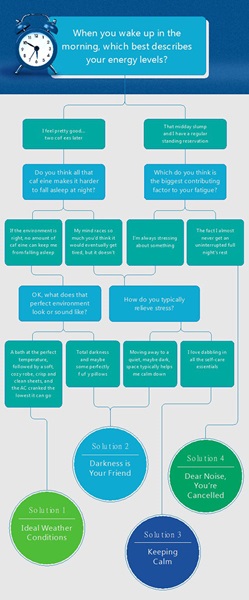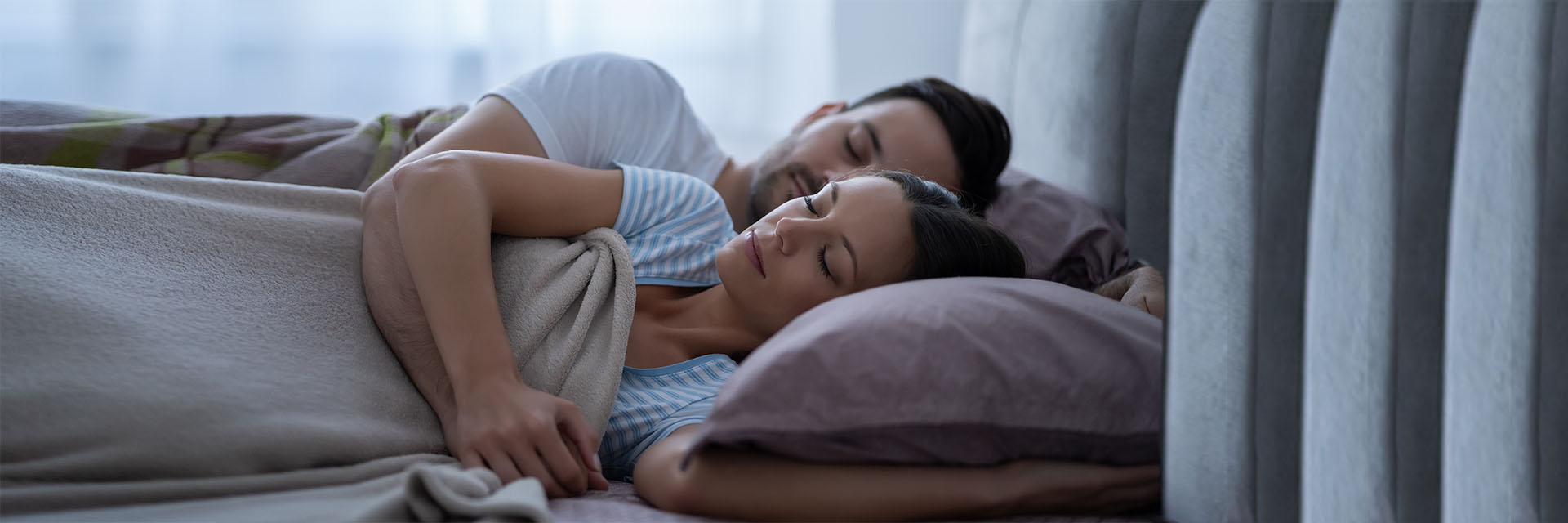When you’re in the midst of a restless night, it can be hard to pinpoint what exactly you need to finally welcome some sleep. Maybe you’re too cold, but then get too hot being covered up. Maybe it’s not dark enough in your room, or maybe it’s not light enough. Maybe the faintest creak of your ceiling fan is magnified by ten, or on the flip side, it’s too quiet in your abode. Or maybe your racing mind is to blame.
If this sounds familiar, you’re not alone. An estimated 20 to 30 million Americans suffer from intermittent sleep problems each year. Additionally, 30% to 40% of adults in the U.S. report symptoms of insomnia at some point annually.
Getting a good night’s sleep is one of the most important things you can do for your health. During sleep, the body can rest, recover and prepare for a new day. If you’ve suffered from even one bad night of sleep, we don’t have to tell you the numerous ways it can affect your physical and emotional well-being the next day.
So, let’s get down to business figuring out what exactly you might be needing in nip those sleepless nights in the bud.

Solution 1: Ideal Weather Conditions
If the temperature in your home isn’t optimized, you might find you and your comforter performing some odd dance throughout the night between covering up and then banishing at the foot of the bed. You need an ideal climate in order to catch the most ZZZs.
A simple swap of your pillowcases and sheets for breathable fabrics, or those specially made with cooling factors may put you on the path to sleep success. Plug in a fan to increase airflow, which can be whisper-quiet or a more traditional fan that has the added bonus of emitting white noise — whichever you prefer. Then pull on some cotton socks, which may seem counterintuitive, however, according to a 2018 study, wearing lightweight, breathable socks to bed helps your body thermoregulate, which ultimately cools your core temperature down.
Solution 2: Darkness is Your Friend
If you could sleep in a cave, that would be ideal. In order to get the best shut eye, the room needs to be as dark as humanely possible — and yes, that includes that annoying little red dot on the television.
But chances are sleeping in a cave isn’t realistic, and covering every light-emitting item in your bedroom may drive you a bit crazy. To make things easier, why not try out a breathable cotton eye mask and blackout curtains?
Need a light in the bathroom or hallway in case of mid-sleep bathroom breaks? Opt for a warm-hued nightlight that emits just enough light to help you safely reach your destination without disrupting your sleep pattern.
Additionally, you may want to limit your exposure to light before heading to bed, including electronics. Stay off all electronic devices — that also means TVs — for a minimum of 30 minutes before bedtime. Keep screens away from the bed. Looking at devices in bed trains our brain to expect a screen and keeps us from falling asleep.
If you have lightbulbs that can dim, consider setting them to dim at least halfway around an hour before bedtime. If you don’t have dimmable lights, try turning off a few lights to create an environment that encourages sleep.
Solution 3: Keeping Calm
While you may be physically ready for bed, your mind is still busy running point on that embarrassing thing you did at work earlier today, which reminds you of that embarrassing thing you did a few years ago, which leads you down a rabbit hole of overthinking mixed with tossing and turning.
Believe it or not, a weighted blanket can help put those anxious thoughts to rest. A 2020 study by Swedish researchers found weighted blankets improved sleep in people with major depressive disorder, bipolar disorder, generalized anxiety disorder, and ADHD. In the study, 120 people received either a light blanket or a weighted chain blanket. After 4 weeks, those who used the weighted blanket had less insomnia and reduced fatigue, depression, or anxiety during the day.
How do they do it? The weight of the blanket utilizes “pressure therapy”, or a calm-inducing amount of pressure applied over your body that is similar to the sensation of being hugged, swaddled, stroked or held.
If you do some shopping, you’ll notice weighted blankets come in a variety of weights and sizes. As a general rule of thumb, a weighted blanket should be 5 to 10 percent of your body weight. The blanket should also fit snugly to the size of the bed.
Pair your new blanket with some calming sounds, such as white, brown, or pink noise, or maybe nature sounds set a more calming tone for you, in addition to your favorite pajamas, and even some soothing scents, such as eucalyptus.
Solution 4: Dear Noise, You’re Cancelled
Some people can sleep in busy airport terminals, through the television blasting, or even during a concert. However, you may find yourself in the category of people who wonder how that is even possible.
If you need pure silence in order to lull yourself off to sleep, the simplest solution is investing in some quality earplugs. Look for earplugs with a high noise reduction rating (NRR), such as anything over 32. While most earplugs on the market won’t totally cancel out all noise, for safety reasons, they’ll do a good job of blocking out almost all noises that would steal your focus away.
Counterintuitively, you may want to actually add some noise to your environment, albeit very controlled, flat noise, such as brown, white or pink noise. The color of noise is determined by the energy of the sound signal, or the speed of the sound. Some noises, such as dogs barking, or cars honking, can stimulate your brain to stay alert, while other sounds can promote relaxation and therefore better sleep.
White noise and pink noise are common sounds for sleep aids. White noise includes all audible frequencies, so it does a great job of masking loud sounds that can stimulate your brain.
Some examples of white noise include:
- Radio or television static
- Whirring fan
- Humming air conditioner
- Hissing radiator
Pink noise includes all frequencies, such as white noise, however, the energy isn’t as equally distributed as white noise., creating a deeper sound.
You’ll find pink noise commonly in nature, whether it be through the rustling of leaves, wind, or a steady rain.
The easiest way to create these noises and find which color noise works best for sending you off to Snoozeville, is by using a sound machine, or through an app on your smartphone or television.
Finding a physician who can partner with you for your health is essential. We can help find a physician that’s appropriate and convenient for you. Call 1-877-THR-WELL (847-9355) or visit TexasHealth.org/FindaProvider today.

